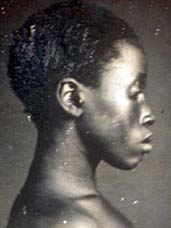Women in the Americas
Women in the Americas are women who were born in, who live in, and are from the Americas, a regional area which encompasses the Caribbean region, Central America or Middle America, North America and South America. Their evolution, culture and history coincide with the history of the Americas, though often the experiences of women were different than those of male members of society. The differences in women's experiences often had to do with division of labor or constraints placed on them due to traditional roles in society. The effects of slavery, bondage and colonization has had a profound effect on women in the Americas over time.
Society for the History of Women in the Americas (SHAW),[1] is a British organization that studies women's history in context of their connection to the Americas.[2] Studying women's history allows for the restoration of lost information about how women lived, worked and participated in their cultures.[3] Looking at women's history through the lens of a shared geography and culture allows useful comparisons of women's lives in the Americas without nationalism clouding the narrative.[4]
Women in the Americas or the women who now populate what is known as North America, Central America, the Caribbean and South America arrived via migration. Many origin stories of the Native peoples who populated the Americas contain themes of the people arriving via another place, whether that is from the ground or from waters, and journeying to their point of origin.[5] The first historical evidence of people in the Americas from scientific study comes from mitochondrial DNA of Paleoindians who crossed the Bering Land Bridge from Beringia into the area now known as Alaska around 13,000 years ago.[6] From the north, migrants from Beringia traveled to the south and from there branched from the west coast toward the east. Initially both men and women were involved in hunting and gathering,[7] as survival depended on all members of society working together. Gathering and storing food, making shelter and clothing to survive harsh northern climates, required multiple skills. Though it is impossible to determine exactly what the division of labor was for early people, it is clear that adaptations were made by migrants to adjust to changing situations.[8] Early archaeology focused on the importance of big game hunting as a survival strategy for Paleoindians, but newer research indicates that a more reliable strategy was more likely centered on gathering activities of women and children.[9] As tools were developed, specific tasks may have taken on gendered aspects,[7] possibly based upon negotiated roles, age, or preferences.[8] When farming emerged in the Archaic period (8000 to 3000 B.C.E.), and a shift from procuring food from available sources was made, societies were transformed toward more settled communities often developing social classes, trade and economic specialization of labor. Archaeological records indicate that women "played a strong role in this transition" throughout the Americas[7] and the activities of women in the creation and use of stone tools is evidenced in the period.[10] Burial records during the archaic period do not reveal much about status differences between women and men[11] but confirm that they performed separate tasks.[12]
.jpg/440px-Native_woman_of_Dasamonquepeio_(1590).jpg)
.jpg/440px-Women_at_Umasbamba_(7914099820).jpg)

